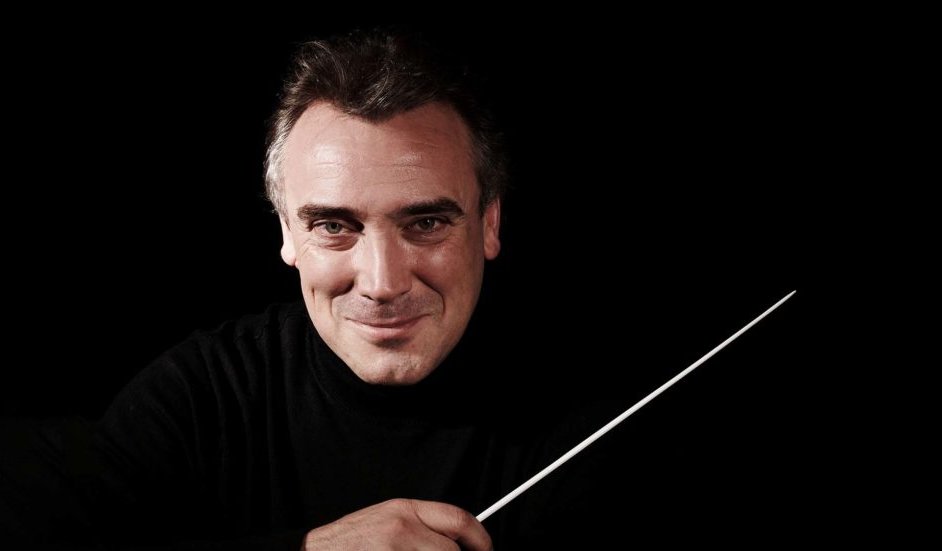

Program
Featuring
Other information
The event is about 2.5 hours long.
About the event
Ravel pays tribute to friends who died in the war, Dohnányi highlights the childishly joyful side of classical musicians, Mendelssohn celebrates the Reformation with a symphony – there are exciting stories behind the music on the program. The concert will be conducted by Jaime Martín, a Spaniard who has been a leading conductor of major orchestras from Melbourne to Los Angeles, and whose “infectious enthusiasm for music finds its way to orchestra and audience alike”, according to a Telegraph reviewer. Ravel’s suite, Le Tombeau de Couperin is a tribute to baroque keyboard music, is followed by Dohnányi’s musical paraphrase of the song Twinkle, twinkle little star, full of musical humor. The soloist of the latter is one of the most sought-after pianists of the world, the Kossuth Prize winner Dénes Várjon. After the interval, the orchestra performs the grandiose Reformation Symphony by the twenty-one-year-old Mendelssohn.
In Le Tombeau de Couperin, Ravel combines innovative sounds with French Baroque meticulousness. The movements are a tribute not only to the composer François Couperin and, through him, to the whole of French Baroque keyboard music, but also to the friends lost in the First World War. The author pays tribute to close military acquaintances, including a pair of brothers killed by a grenade. The mood of the piece is nostalgic rather than mournful. While composing the work, originally written for piano, Ravel immediately heard orchestral colors, especially the oboe, which became one of the main characters in the orchestrated version. The swirling prelude is followed by a lullaby-like forlane (Italian folk dance), a serene minuet, and a poignant rigaudon (French baroque dance).
“To the delight of friends of humor, to the annoyance of others” – says Ernő Dohnányi on the sheet music of his versions for children’s songs. This piano concerto-like work, composed in 1914, opens with a long and solemn orchestral introduction of almost Wagnerian depth. The piano’s entrance is the composer’s greatest musical prank, as the soloist responds to the monumental sound with the childlike simplicity of the theme from Twinkle, twinkle little star. In addition to the humor, we also hear brilliant orchestration, exciting harmonies and diverse stylistic parodies. Dohnányi composed eleven variations – including a waltz, a march and a chorale – and a complex, fugal finale from the children’s song.
Felix Mendelssohn was christened Bartholdy when he was seven years old. Having always been close to Protestantism, he studied Bach’s sacred works with passion. In 1830, a large-scale celebration was planned for the 300th anniversary of the Augsburg Confession, for which Mendelssohn envisioned a purely instrumental symphony instead of a liturgical choral work. The ceremony was cancelled, but the work was completed. The slow introduction of the opening movement is set by a six-note motive called the “Dresden Amen”, followed by a fast passage of Beethovenian power. After a lively scherzo and a slow movement reminiscent of a prayer or aria, the finale, based on the sounds of the famous chorale Ein feste Burg, is played without pause. The symphony ends with the triumph of these Lutheran voices.
Did you know? Ravel’s original piano piece premiered in Paris on April 11, 1919 by Marguerite Long; Dohnányi’s piece, featuring the composer as the soloist, premiered in Berlin on February 17, 1914; Mendelssohn’s Symphony No. 5 was performed for the first time on November 15, 1832, with the composer conducting; this will be the first performance of Ravel’s piece by the Festival Orchestra; Variations was most recently played by the BFO on September 19, 2015 in Bonn (soloist: Dénes Várjon); Symphony No. 5 was most recently performed on November 10, 2013 (conductor: Gábor Takács-Nagy).
Contemporary events: the Russian painter Zinaida Serebriakova, living in France, painted her work House of Cards in 1919 / the opera The Woman without a Shadow, by the German composer Richard Strauss, premiered in Vienna on October 10, 1919 / Vice Admiral Miklós Horthy rode into Budapest on November 16, 1919 at the helm of the National Army / the Irish-English author James Joyce published his collection of stories Dubliners in 1914 / the Italian painter Giorgio de Chirico painted his painting Gare Montparnasse in 1914 / the Serbian student Gavrilo Princip assassinated Archduke Franz Ferdinand and his wife in Sarajevo on June 28, 1914, and the event was used as a pretext for the outbreak of the First World War / an unsuccessful pro-republican uprising broke out in Paris in June 1832 / the German composer and pianist Clara Schumann composed her piece Caprices en forme de valses in 1832 / the Austrian poet Nikolaus Lenau published his first book of poems in 1832 (Poems)